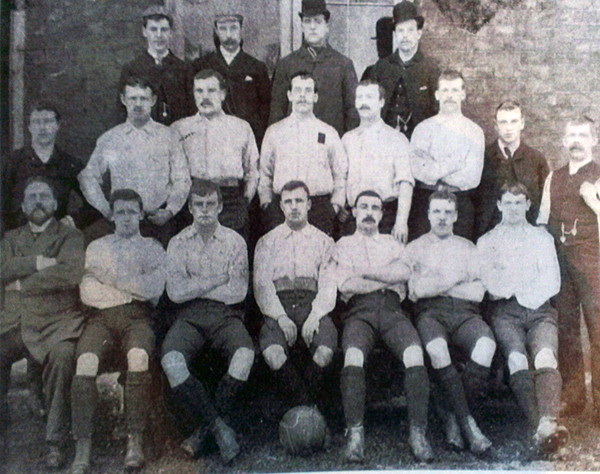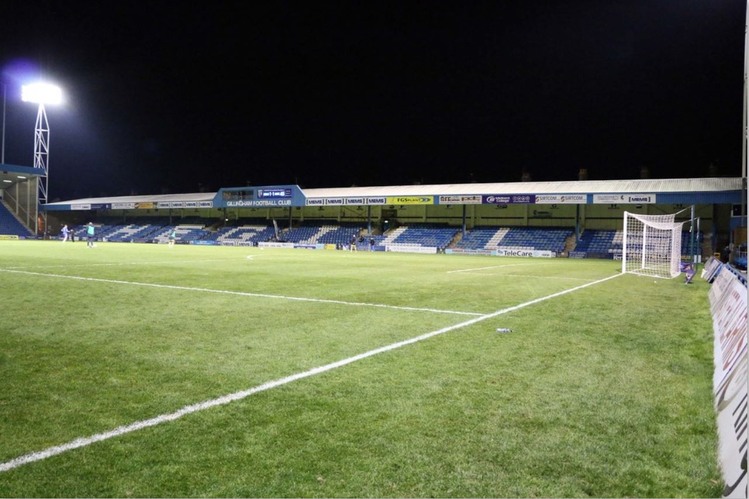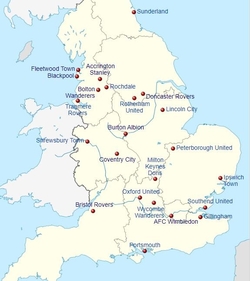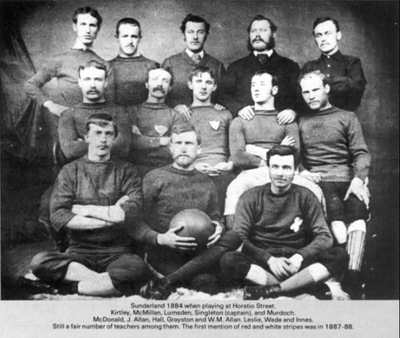League One Stadiums & Stats

Don’t get confused by its misleading name, League One is actually the second highest division in the Football League. If that’s not confusing enough then it’s also the third highest league in England, owing to the fact that the Premier League is actually a separate entity from the Football League.
‘Why is it called League One?’ we hear you ask. Well don’t ask because you’re probably only going to get confused by the answer.
It is technically known as Sky Bet League 1 at the time of writing because of the fact that Sky Bet sponsor it. That means that in its recent history its had about 700 names. Ok that’s a slight exaggeration, but only slight.
The name changed to League One in 2004 and prior to that it had been known as the Football League Second Division. Before that, and the invention of modern football with the Premier League, it was called the Football League Third Division. Is that clear? Thought not.
Stadium Stats
| Stadium | Year Opened | Capacity | Ave Attendance | Record Attendance | Record Attendance Match |
|---|---|---|---|---|---|
|
Abbey Stadium
Cambridge United |
1932 | 8127 | 6199 | 14000 | Cambridge Utd v Chelsea (1970) |
|
Adams Park
Wycombe Wanderers |
1990 | 10137 | 5753 | 10000 | Wycombe v Chelsea (2005) |
|
Bloomfield Road
Blackpool |
1899 | 16616 | 11692 | 38098 | Blackpool v Wolves (1955) |
|
Brisbane Road
Leyton Orient |
1937 | 9271 | 7841 | 34345 | Leyton Orient v West Ham (1964) |
|
Broadhall Way
Stevenage |
1961 | 7800 | 3691 | 8040 | Stevenage v Newcastle 1998 |
|
Brunton Park
Carlisle United |
1909 | 17949 | 6662 | 27500 | Carlisle v Birmingham (1957) |
|
DW Stadium
Wigan Athletic |
1999 | 25133 | 12008 | 25133 | Wigan v Man United (2008) |
|
Fratton Park
Portsmouth |
1898 | 21100 | 18064 | 51385 | Portsmouth v Derby (1949) |
|
Highbury Stadium
Fleetwood Town |
1939 | 5327 | 3497 | 6150 | Fleetwood v Rochdale (1965) |
|
Kassam Stadium
Oxford United |
2001 | 12500 | 8393 | 12243 | Oxford v Leyton Orient (2006) |
|
Madjeski Stadium
Reading |
1998 | 24161 | 14375 | 24184 | Reading v Everton (2012) |
|
Memorial Stadium
Bristol Rovers |
1921 | 12300 | 8907 | 12011 | Bristol Rovers v West Brom (2008) |
|
New Meadow
Shrewsbury Town |
2007 | 9877 | 6430 | 10210 | Shrewsbury v Chelsea (2014) |
|
Oakwell Stadium
Barnsley |
1888 | 23287 | 11807 | 40255 | Barnsley v Stoke City (1936) |
|
Pirelli Stadium
Burton Albion |
2005 | 6912 | 3445 | 6912 | Burton Albion v Oxford (2009) |
|
Pride Park
Derby County |
1997 | 33597 | 27259 | 33598 | England v Mexico (2001) |
|
Sincil Bank
Lincoln City |
1895 | 10669 | 8486 | 23196 | Lincoln City v Derby County (1967) |
|
Sixfields Stadium
Northampton Town |
1994 | 7798 | 5845 | 7664 | Northampton v Luton (2016) |
|
St James Park
Exeter City |
1904 | 8219 | 6846 | 20984 | Exeter v Sunderland (1931) |
|
The University of Bolton Stadium
Bolton Wanderers |
1997 | 28723 | 18814 | 28353 | Bolton v Leicester (2003) |
|
The Valley
Charlton Athletic |
1919 | 27111 | 13436 | 75031 | Charlton v Aston Villa (1938) |
|
Vale Park
Port Vale |
1950 | 20552 | 4862 | 49768 | Port Vale v Aston Villa (1960) |
|
Weston Homes London Road
Peterborough United |
1913 | 15314 | 8862 | 30096 | Peterborough v Swansea (1965) |
|
Whaddon Road
Cheltenham Town |
1927 | 7066 | 3203 | 8326 | Cheltenham v Reading (1956) |
Team Stats
| Team | Year Founded | Nickname | Team Owner |
|---|---|---|---|
| Barnsley | 1887 | The Tykes, The Reds | BFC Investment Company Limited |
| Blackpool | 1887 | The Seasiders, The 'Pool, The Tangerines | Simon Sadler |
| Bolton Wanderers | 1874 | The Trotters, The Wanderers | Football Ventures (Whites) Ltd |
| Bristol Rovers | 1883 | The Pirates, The Gas | Hussain AlSaeed, The Jordanian Al Qadi Family |
| Burton Albion | 1950 | The Brewers | Ben Robinson |
| Cambridge United | 1912 | United, The U's | Paul Barry |
| Carlisle United | 1904 | Cumbrians, The Blues | Andrew Jenkins, Steven Pattison and John Nixon |
| Charlton Athletic | 1905 | The Addicks, Red Robins, The Valiants | Thomas Sandgaard |
| Cheltenham Town | 1887 | The Robins | CTFC Investments Ltd & The Robins Trust |
| Derby County | 1884 | The Rams | David Clowes |
| Exeter City | 1901 | The Grecians | Exeter City Supporters' Trust |
| Fleetwood Town | 1908 | The Cod Army | Andrew Pilley |
| Leyton Orient | 1881 | The O's, Orient | Nigel Travis |
| Lincoln City | 1884 | The Imps | Lincoln City Holdings Ltd |
| Northampton Town | 1897 | The Cobblers | Kelvin Thomas |
| Oxford United | 1893 | The U's, Yellows, The Boys from Up the Hill | Erick Thohir & Anindya Bakrie |
| Peterborough United | 1934 | The Posh | Darragh MacAnthony, Kelgary Sports & Entertainment |
| Port Vale | 1876 | The Valiants, The Vale, The Valeites | Synsol Holdings Limited |
| Portsmouth | 1898 | Pompey | Michael Eisner (Tornante Group) |
| Reading | 1871 | The Royals | Dai Yongge and Dai Xiuli |
| Shrewsbury Town | 1886 | Salop, The Blues, The Town, The Shrews | Roland Wycherley |
| Stevenage | 1976 | The Boro | Phillip Wallace |
| Wigan Athletic | 1932 | The Latics | Mike Danson |
| Wycombe Wanderers | 1887 | The Chairboys, The Blues | Feliciana EFL Limited, Wycombe Wanderers Trust |
Ticket Prices
| Stadium | Season Ticket Price (Adult) | Season Ticket Price (Conc) | Season Ticket Price (Junior) | Match Ticket Price (Adult) | Match Ticket Price (Conc) |
|---|---|---|---|---|---|
| Barnsley | £392 - £532 | £240 - £302 | £10 - £129 | £20 - £28 | £15 - £21 |
| Blackpool | £349 - £549 | £309 - £549 | £59 - £449 | £22 - £40 | £18 - £40 |
| Bolton Wanderers | £299 - £399 | £189 - £239 | £69 - £99 | £26 - £34 | £21 - £29 |
| Bristol Rovers | £369 - £519 | £219 - £509 | £49 - £369 | £12 - £28 | £16 - £24 |
| Burton Albion | £360 - £432 | £324 - £396 | £77 - £182 | £20 - £24 | £18 - £22 |
| Cambridge United | £390 - £500 | £300 - £390 | £50 - £390 | £19 - £25 | £16 - £21 |
| Carlisle United | £420 - £483 | £357 - £420 | £23 - £153 | £23 - £26 | £20 - £23 |
| Charlton Athletic | £285 - £625 | £215 - £475 | £30 - £145 | £24 - £30 | £22 - £23 |
| Cheltenham Town | €281 - €407 | €206 - €286 | €55 - €110 | €18 - €26 | €13 - €18 |
| Derby County | £268 - £468 | £214.5 - £351 | £71.5 - £234 | £16 - £32 | £12 - £24 |
| Exeter City | £385 - £515 | £323 - £460 | £59 - £232 | £22 - £28 | £19 - £25 |
| Fleetwood Town | £189 - £329 | £120 - £240 | £23 - £50 | £20 - £28 | £15 - £23 |
| Leyton Orient | £307 - £456 | £229 - £289 | £66 - £126 | £22 - £24 | £19 - £22 |
| Lincoln City | £380 - £500 | £270 - £380 | £33 - £190 | £24 - £25 | £19 - £20 |
| Northampton Town | £390 - £450 | £290 - £340 | £90 - £150 | £24 - £24 | £20 - £20 |
| Oxford United | £330 - £530 | £190 - £330 | £33 - £180 | £22 - £32 | £15 - £26 |
| Peterborough United | £429 - £529 | £329 - £409 | £0 - £129 | £25 - £29 | £20 - £24 |
| Port Vale | £295 - £310 | £240 - £255 | £135 - £145 | £20 - £21 | £15 - £16 |
| Portsmouth | £464 - £479 | £354 - £366 | £115 - £120 | £25 - £26 | £19 - £20 |
| Reading | £350 - £475 | £265 - £325 | £23 - £140 | £23 - £30 | £18 - £22 |
| Shrewsbury Town | £485 - £550 | £350 - £390 | £21 - £175 | £20 - £22 | £15 - £17 |
| Stevenage | £340 - £440 | £300 - £400 | £90 - £230 | £20 - £24 | £18 - £22 |
| Wigan Athletic | £345 - £366 | £293 - £314 | £51 - £104 | £17 - £39 | £14 - £26 |
| Wycombe Wanderers | £362 - £514 | £305 - £457 | £39 - £305 | £22 - £31 | £21 - £28 |
League One Stadiums

The grounds in League One are, more often than not, single-tier affairs that don’t even come close to the modern day behemoths you’d expect to find in the Premier League or even the Championship. There are sometimes some exceptions, of course, with teams receiving an influx of cash or being bought out by new owners and deciding to doll their new football club’s home up a bit, but generally they are small grounds that could cruelly be described as parochial.
We’re not cruel, though, so we’d rather describe them as ‘characterful’. More than a couple of the grounds have taken advantage of the fact that only the top two divisions in England have to have all-seater stadiums, meaning that you’ll often find safe-standing areas, or terracing as they’re also known. Should a club be promoted to the Championship, or England’s second tier if you remember, they then have three years to convert their stadium to all-seater. If they get relegated during that time then when they are next promoted any previously served time counts towards the three years.
As well as newly cash-rich clubs developing their stadiums to look all posh and swanky, there are also a number of former Premier League clubs that find themselves relegated through the divisions who have stadiums that are better than some of those around them. Teams like Bradford City, Sheffield United and Wigan Athletic have all spent some time in England’s third tier and visitors to the grounds will have been impressed with what they saw compared to the more threadbare options around them.
- Abbey Stadium
- Adams Park
- Bloomfield Road
- Brisbane Road
- Broadhall Way
- Brunton Park
- DW Stadium
- Fratton Park
- Highbury Stadium
- Kassam Stadium
- Madjeski Stadium
- Memorial Stadium
- New Meadow
- Oakwell Stadium
- Pirelli Stadium
- Pride Park
- Sincil Bank
- Sixfields Stadium
- St James Park
- The University of Bolton Stadium
- The Valley
- Vale Park
- Weston Homes London Road
- Whaddon Road
About The League
 Until 1992 the Football League was one big, united and happy family. Then the teams in the top division realised they could get significantly richer if they broke away from all of the other clubs and formed their own premier division that would be a separate entity. Thus the Premier League was born, abandoning its brethren and enjoying the exclusivity that comes with being a sole enterprise.
Until 1992 the Football League was one big, united and happy family. Then the teams in the top division realised they could get significantly richer if they broke away from all of the other clubs and formed their own premier division that would be a separate entity. Thus the Premier League was born, abandoning its brethren and enjoying the exclusivity that comes with being a sole enterprise.
The Second Division then became the Football League’s First Division and the Third Division its Second Division. There were rumours that the entire thing was invented just so that the word ‘Division’ could be used an unhealthy amount of times, but they were never substantiated. The re-branding of the leagues as we know them know came about in 2004 when, as we’ve already explained, the Football League’s three divisions became known as the Championship, League One and League Two.
Each of the Football League’s divisions contain 24 clubs and each team plays each other once at home and once at the other club’s home. Three points are awarded if a team wins their game and a point is awarded to each team if they draw. If a team loses then, as you’d imagine, they get nothing. The more points a team has earned by the end of the season the higher in the division they finish. The top two clubs are automatically promoted to the Championship, whilst the clubs that finished between third and sixth have play-offs against each other to determine which one of them will also be promoted. The bottom three clubs are relegated to League Two. See, it’s easy when you know what you’re talking about.
League One History
 Division Three, as it was known at the time, was founded in 1920 by leading clubs that had previously been playing in the Southern League, something that was separate from the Football League. Just to make things even more confusing it was rebranded as the Third Division South in 1921, with more clubs added to another league called the Third Division North at the same time. The top team at the end of the season was promoted to the Second Division.
Division Three, as it was known at the time, was founded in 1920 by leading clubs that had previously been playing in the Southern League, something that was separate from the Football League. Just to make things even more confusing it was rebranded as the Third Division South in 1921, with more clubs added to another league called the Third Division North at the same time. The top team at the end of the season was promoted to the Second Division.
The entire Football League was suspended in 1939 because of the outbreak of World War Two, with the resumption of activities seven years later also coinciding with the decision to expand both Northern and Southern Third Divisions to 24 teams. That brought the total number of teams in the Football League up to 92, a number that, with some exceptions, it has remained at since.
In 1958 the choice was made to abandon the notion of a regionalised Third Division. Instead the top half of the Northern and Southern Third Divisions joined together to create a unified Third Division, whilst the bottom halves of each league became the Fourth Division. Other than the re-branding of names it has stayed that way since then.
Until 1974 two teams could gain access to the Second Division, whilst four would be relegated from the Third Division into the Fourth and four would also be promoted between the bottom two tiers. In that year the number of clubs promoted moved from two to three. Before 1981 clubs that won a match were awarded only two points, with three points becoming standard at the start of the new season that year. Meanwhile, at the start of the 1990s the plan was to expand the league to include Football League to include 94 clubs, but two of them went bust meaning that the number never rose past 92 for long.
